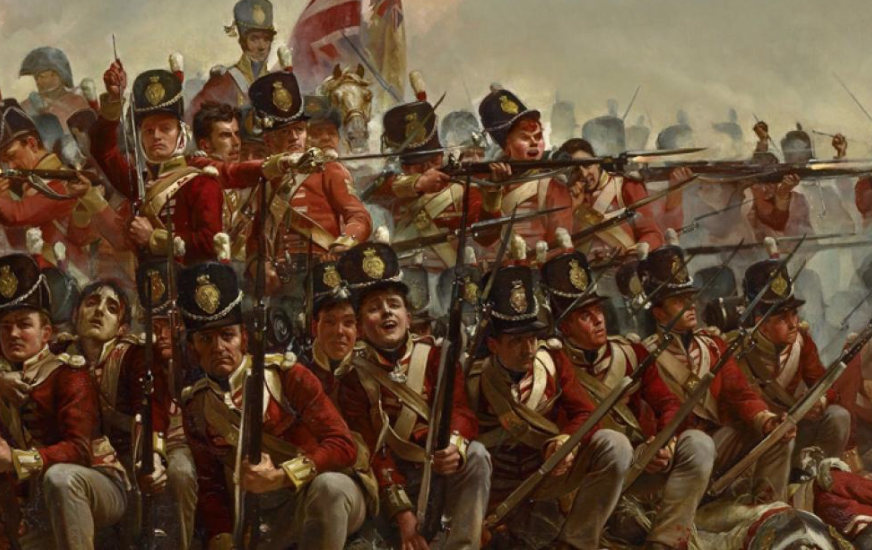
The Nature of Military Revolution
The idea of a military revolution was advanced by historian Michael Roberts in 1955, arguing that changes in military technology and tactics between 1560 and 1660 formed the basis for the formation of the modern state. In particular, Roberts argued that the rise of the modern European state resulted from social, economic, technical, and organizational innovations necessary to "solve the perennial tactical problem of how to combine striking power, mobility, and defensive power."
Over the next five decades, military historians extended Roberts' analysis to trace the causes and effects of military innovations, linking the changes wrought by war to the social, economic, and political structure of the state itself. Over the years, military revolutions were increasingly seen as important drivers of social and political change, but they were unpredictable due to tactical, organizational, financial and other factors.
Thus, the official understanding of military revolutions has eluded scholars and strategists interested in anticipating, exploiting, or defending such disruptions of the established international order.
A non-linear model of evolutionary change was used to explain the nature of the emergence of military innovations (especially those with profound social consequences). The latter made it possible to explain gradual improvements, often not inconsequential at the operational or strategic levels, and large-scale system-level transformations affecting the "character" of states in the context of general and constant strategic pressures exerted by the latter on each other.
There appear to be two historical phenomena involved in radical innovation and change. The first can be called military revolutions. These were far more important because they fundamentally changed the nature of warfare in the West; The creation of a modern, effective nation-state based on an organized and disciplined military force in the 17th century, the French Revolution and the Industrial Revolution that began simultaneously from 1789-1815, and World War I from 1914-1918.
In geological terms, they can be compared to earthquakes because they caused systemic changes in the political, social and cultural arenas that were largely uncontrollable and primarily unpredictable. Therefore, those who expect the "information revolution" to bring about radical social and cultural changes must clearly understand that the direction and consequences of such a revolution will be largely unpredictable for both society and military organizations. Such "military revolutions" transform the nature of society and the state, as well as military organizations, also changing the ability of states to project military power, allowing militaries to kill people. Moreover, these revolutions do not replace, but rather complement each other. Therefore, all the new technology in the world will not help the Iraqi army to fight consistently on the modern battlefield, because the Iraqi society has not followed the path of creating a modern state and the government does not have the ability to inspire its citizens.
On the other hand, the Vietnamese communist movement, which combined the enthusiasm and fervor of the French Revolution in a xenophobic culture, defeated the two great Western powers. The French Revolution established norms for the mobilization of economic, scientific and popular resources.
The result was that the French tripled their army in less than a year, which, although less capable than their opponents individually, could fight like no other military formation of the 18th century.
Only when the adversaries were prepared to fight on the same terms, namely the national mobilization of resources and manpower, was France finally able to take the situation into its own hands. But its revolutionary example would be replicated by the warriors of the American Civil War and later in the fierce race of the two world wars of this century.
As mentioned above, the French Revolution was echoed in distant Indochina wars against the French and later the Americans.
In many ways, World War I reaffirmed the deadly combination of these revolutions. This conflict was a profoundly revolutionary event that fundamentally upset the Western balance, with enormous political, economic and social consequences. The political fallout from the war was arguably over by the fall of 1989. But of all military revolutions, World War I must be considered the most revolutionary in military terms. It included the development of combined arms, exploitation tactics, strategic bombing, unrestricted submarine warfare, carrier operations, and even amphibious warfare. Of course, weapons, technology, and tactical concepts determined to some extent the nature of subsequent hostilities. It is therefore not surprising that a British or German battalion commander fighting on the battlefields of 1918 would understand the ideas behind the battlefield wars of 1940, 1944 and even 1991.
Add new comment